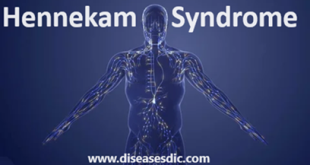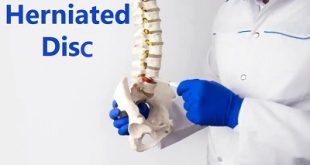Definition
Hyperhidrosis is a medical condition where an excessive amount of sweat is produced by the sweat glands. The amount of sweat produced is out of proportion to the amount required to cool the body. This does not mean that sweating a lot after running on a hot summer’s day that you have hyperhidrosis. However, producing a deluge of sweat whilst at rest in a cool environment is more indicative of hyperhidrosis.
Hyperhidrosis in hand
Epidemiology
United States
In the United States and the United Kingdom, 1-1.6% of people have records reflecting hyperhidrosis. About 60% in both databases were women.
In adolescents and young adults, an incidence rate of 0.6-1% is reported for hyperhidrosis.
International
Palmoplantar hyperhidrosis occurs 20 times more frequently in the Japanese than in any other ethnic group.
Types of Hyperhidrosis
There are two forms of hyperhidrosis – primary and secondary.
Primary hyperhidrosis affects mainly the feet, palms, underarms and face. It is caused by the sympathetic nervous system sending signals to the nerves of the sweat glands, prompting them to increase sweat production unnecessarily.
Secondary hyperhidrosis affects the whole body and is primarily caused by certain medications, hormonal imbalances such as those caused by menopause, infections, metabolic conditions or neurological issues.
Risk factors
Risks for developing excessive sweating are related to the existing medical and underlying conditions of secondary hyperhidrosis.
Genetics
A genetic predisposition is believed to cause primary hyperhidrosis. If you have any family members who suffer from excessive sweating, the chances of you developing the condition are high.
Puberty
Excessive sweating generally develops during puberty where adolescents are consistently exposed to anxiety and stress which can lead to excessive sweating.
Menopause
Women going through menopause experience a variety of emotional and physical changes that can contribute to excessive sweating.
Abnormal Functions of the Brain and Nerves
If the brain has an impaired sensory response it can cause the sweat glands to mistakenly react to the body’s temperature. This causes the body to sweat abnormally.
Obesity
Although excessive sweating can affect any body type, people who are overweight are more susceptible to the condition. This is due to the fact the sweat glands have to operate twice as hard to cleanse the body of toxins as well as regulate the body’s temperature.
Hot Weather
Sweat helps to regulate our body’s temperature. When we are exposed to extreme heat or humidity the body needs to cool down and thus produces high levels of sweat to compensate for the heat. If you are visiting a hot place but normally live in colder conditions, you will sweat more than those who are used to the warmer climate. Other risk factors for developing excessive sweating include neurological disorders such as Parkinson’s disease, certain types of cancers such as Hodgkin’s disease, and variety of infections including HIV, and tuberculosis.
Causes of Hyperhidrosis
In many cases, hyperhidrosis has no obvious cause and is thought to be the result of a problem with the part of the nervous system that controls sweating. This is known as primary hyperhidrosis.
Hyperhidrosis that does have an identifiable cause is known as secondary hyperhidrosis. This can have many different triggers, including:
- Pregnancy or the menopause
- Anxiety
- Certain medications
- Low blood sugar (hypoglycemia)
- An overactive thyroid gland (hyperthyroidism)
Symptoms
- Signs of visible perspiration abundant: the sweat that bead on the face, which soaks the clothes even while remaining inactive or flowing on the worktop
- Interference in daily activities: even the simplest gestures like operating a door wrist become difficult because of sweaty hands;
- The skin always looks moist and softened. It whitens in some places and sometimes peels;
- Frequent skin conditions on parts of the body that sweat excessively. Athlete’s foot, eczema, and itching in the groin are the most common.
- Excessive perspiration during sleep or when nervous
- Need to change clothes several times a day.
Complications of Hyperhidrosis
Complications of hyperhidrosis include:
Infections: People who sweat profusely are more prone to skin infections.
Social and emotional effects: Having clammy or dripping hands and perspiration-soaked clothes can be embarrassing. Your condition may affect your pursuit of work and educational goals.
Diagnosis and test
To make the diagnosis, your doctor will perform a physical examination to determine the presence of sweat, and will usually do medical tests to rule out any underlying conditions that might be causing generalized hyperhidrosis. Hyperhidrosis can also be diagnosed based on your history of experiencing excessive sweating.
Simple tests to confirm the condition may also be used. Two common tests include:
Starch-iodine test: A doctor applies iodine solution to the sweaty area and then sprinkles starch to look for a dark blue or purple color. This color indicates the area of excess sweat.
Paper test: A doctor places a special paper on the area where sweating is observed. Sweat absorbs into the paper and then the paper is weighed. The weight of the paper after the test indicates how much sweat was absorbed.
Treatment and Prevention
There are several treatments that can be effective for treating hyperhidrosis, including:
Aluminium chloride antiperspirants
Anti-perspirants containing 20-25% aluminium chloride (so-called “clinical strength” antiperspirant) are often the first line of defense for excessive sweating. Clinical strength anti-perspirant is available without the prescription at most pharmacies and even in the personal hygiene aisle of your neighborhood supermarket. Stronger prescription antiperspirants may contain up to 30% aluminium chloride, which is sometimes effective but can cause skin irritation.
Tap water iontophoresis
Iontophoresis, a treatment used for sweaty hands and feet, electrically charges a basin of tap water into which hands or feet are submerged. One study of the treatment reported that it is effective for palmoplantar (hands and feet) hyperhidrosis, and reported that 24/27 patients found the treatment dramatically improved their condition.
Iontophoresis for sweaty hands
Drionic Underarm Iontophoresis Device
Neuromodulators for hyperhidrosis
Neuromodulator injections are an effective treatment for hyperhidrosis. It is injected near the sweat glands in a quick and relatively painless treatment. Clinical studies on the treatment of hyperhidrosis with Neuromodulators has demonstrated that up to 81% of patients had a 50% reduction in sweating that lasted on average up to 6.7 months.
Underarms – are the most common and easiest place to treat. Botox is injected with tiny needles just under the skin. It takes only minutes to complete.
Hands – also respond well to Neuromodulator injections.
Forehead – sweating occurs near the hairline and drips down the face. A few small injections easily treat this.
Feet – like the hands, often require some anesthetic before treatment. It is not uncommon to find improvement of the feet after just the hands are treated.
 Diseases Treatments Dictionary This is complete solution to read all diseases treatments Which covers Prevention, Causes, Symptoms, Medical Terms, Drugs, Prescription, Natural Remedies with cures and Treatments. Most of the common diseases were listed in names, split with categories.
Diseases Treatments Dictionary This is complete solution to read all diseases treatments Which covers Prevention, Causes, Symptoms, Medical Terms, Drugs, Prescription, Natural Remedies with cures and Treatments. Most of the common diseases were listed in names, split with categories.








how to reduce my Sweet in my hand and fit
please consult a doctor.
Now I know what hyperhidrosis is all about. Thanks
what are necessary majors being taken after this effect.
Try to keep your hand dry by wiping with a sterile tissue then and then.
I wonder if U can send me names of some medications used in the treatment??.
oxybutynin
Drysol
Hypercare
Hytrin
Terazosin
Please , more details about treatment of 1ry hyperhidrosis of the face ?
Soon we will update about face hyperhidrosis, keep reading our app.